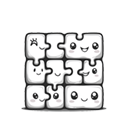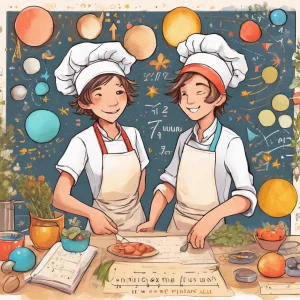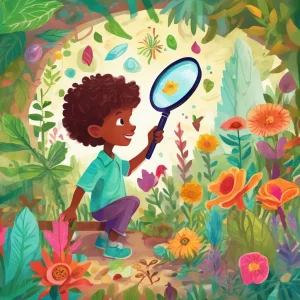Activity
Similar Activities
Ecosystem Adventure Board Game - Nature's Quest
Children’s Age: 7–9 years
Activity Duration: 10 – 25 minutes
An interactive board game where children explore and learn about ecosystems through challenges and tasks.
Activity Duration: 10 – 25 minutes
Cultural Creatures: Stop-Motion Animation Adventure
Children’s Age: 4–9 years
Activity Duration: 10 – 25 minutes
An interactive activity using technology to create stop-motion animations exploring plants and animals from diverse cultures.
Activity Duration: 10 – 25 minutes
Symmetry Magic: Reflective Art Adventure
Children’s Age: 7–10 years
Activity Duration: 10 – 25 minutes
This activity involves exploring symmetry through a creative and interactive art project for children aged 7-10 years.
Activity Duration: 10 – 25 minutes
Bridge Builders: Eco Teamwork and Critical Thinking
Children’s Age: 8–9 years
Activity Duration: 10 – 25 minutes
An eco-conscious activity where children build bridges using popsicle sticks and tape to support toy cars, promoting teamwork and environmental awareness.
Activity Duration: 10 – 25 minutes
Cultural Collage Creations: Exploring World Wonders Together
Children’s Age: 7–9 years
Activity Duration: 10 – 25 minutes
Let's embark on a creative journey with "Cultural Collage Creations"! This educational craft project invites children to explore diverse cultures through art. Gather supplies and c…
Activity Duration: 10 – 25 minutes
Cosmic Conundrum Chefs: Space Word Problem Adventure
Children’s Age: 7–8 years
Activity Duration: 10 – 20 minutes
Let's play Space Word Problem Chefs! We'll use paper, pencils, and space-themed stickers to explore language and problem-solving. Set up a cozy spot, grab your supplies, and get re…
Activity Duration: 10 – 20 minutes
Enchanted Digital Storytelling Adventure through Nature's Wonders
Children’s Age: 5–18 years
Activity Duration: 50 minutes
Let's go on a "Digital Storytelling Adventure"! We'll create exciting stories using nature-themed digital images and fun drawing tools on a tablet or computer. Get ready to brainst…
Activity Duration: 50 minutes
Enchanted Nature Quest: The Sensory Nature Hunt
Children’s Age: 0 month – 6 years
Activity Duration: 10 minutes
Let's go on a Sensory Nature Hunt! We will use our senses to find items like pinecones, leaves, rocks, and flowers. You can bring a basket, a list of things to find, and maybe a ma…
Activity Duration: 10 minutes
Engaging Holiday Memory Game for Kids
Children’s Age: 2–6 years
Activity Duration: 10 minutes
Let's play the Holiday Memory Game! You and your child can enjoy this fun activity together without needing any materials. Find a cozy spot, sit down, and get ready to play.
Sta…
Activity Duration: 10 minutes
Magical Storytelling: Create Together with Friends
Children’s Age: 4–6 years
Activity Duration: 15 – 30 minutes
In the Create a Story Together activity, children will explore their creativity, language skills, and teamwork. Get small pieces of paper, colored pencils, and a container ready. K…
Activity Duration: 15 – 30 minutes
Enchanted Fort Adventures: Building a Storytime Fort
Children’s Age: 4–6 years
Activity Duration: 20 minutes
Engage children aged 48 to 72 months in the "Building a Storytime Fort" activity for a creative storytelling experience. This activity promotes adaptive and cognitive development, …
Activity Duration: 20 minutes
Enchanted Digital Family Storytime Journey
Children’s Age: 6 months – 1.5 years
Activity Duration: 5 minutes
Engage your child with "Digital Family Storytime," a captivating activity tailored for children aged 6 to 18 months. Through interactive storytelling on a tablet or smartphone, thi…
Activity Duration: 5 minutes



























